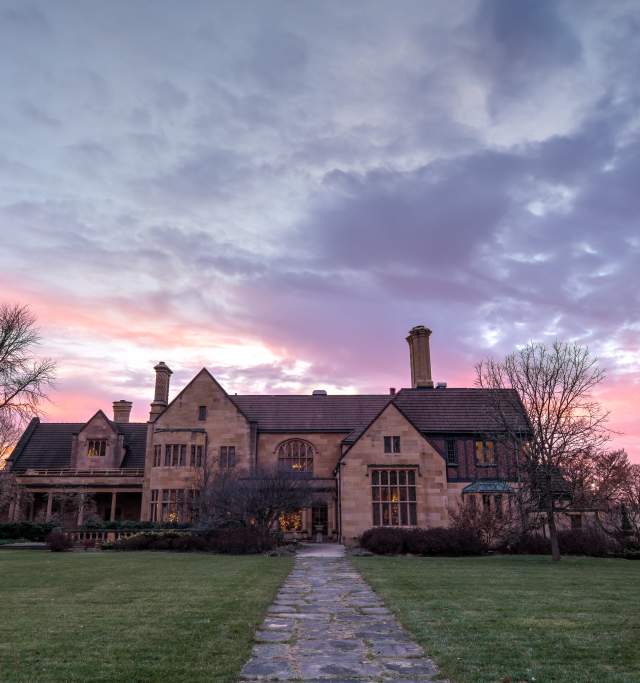History
The Oshkosh area was first settled by the Menominee nation of Native Americans, including the namesake of the city, Chief Oskosh (not a misspelling), who ceded the area to the United States government in 1836.
According to local lore, the area’s first non-Indian settler, Webster Stanley, arrived shortly after, migrating from Ohio to start a ferryboat operation. Within several months, he built his home and soon established a trading post, a tavern and an inn. Three years later, this area became home to more than 100 people. The towns of Brooklyn, located on the south side of the Fox River, and Athens, located on the north, merged and officially adopted the name “Oskosh” and added an ‘h’ sometime later. In 1847, Morris Firman began operating the first sawmill in Oshkosh and it didn’t take long before sawmills lined the entire Fox River. The arrival of the railroad, the Civil War and the great Chicago fire of 1871, further created a boom in Oshkosh’s lumber trade. Much of the lumber used to rebuild Chicago was produced by Oshkosh sawmills. By 1873, 24 sawmills, 15 shingle mills, and seven sash and door companies were in operation, making Oshkosh known as “Sawdust City.”
Oshkosh experienced its own fires in 1874 and 1875 that destroyed much of the original downtown. Many of the buildings erected in the reconstruction are still standing today. Following the fires, growth in Oshkosh continued rapidly as the railroad expanded and other industries expanded to take the place of lumber.
The firm that made Oshkosh famous, Oshkosh B’Gosh, was established in 1903, but its iconic name would not appear until 1910.
In the late nineteenth and early twentieth centuries, Oshkosh was second in population only to Milwaukee. At this time, Oshkosh was also the largest city in the Fox River Valley and the construction of the Grand Opera House in 1883 marked the beginning of Wisconsin’s Event City moniker, drawing the nation’s biggest stars in the theater, vaudeville, opera and lecture circuits.
During World Wars I and II, Oshkosh contributed supplies and soldiers and met the Depression with resistance.
Today, Oshkosh and the surrounding area have a population of 95,000 people and an abundance of sights and sounds for visitors to discover and enjoy. The city is located on the western shore of Lake Winnebago and is banked by the Fox River and Lake Butte des Morts in Winnebago County.
Lake Winnebago, the largest freshwater lake within the state, was carved from the same limestone formation that creates Niagara Falls, 900 miles east of Oshkosh. Winnebago County has more water area than any other Wisconsin county. The waterways that once provided transportation for explorers and power for sawmills are still a vital part of our community, only now they are used for recreation.
As we look to the next century, Oshkosh will continue to grow and thrive. The city’s greatest asset is its people, who make this a great place to live, work and visit.
